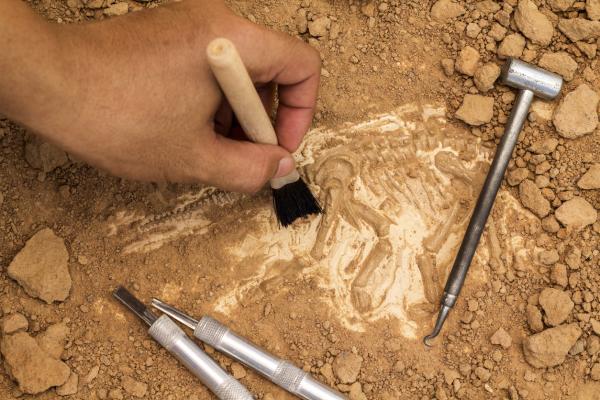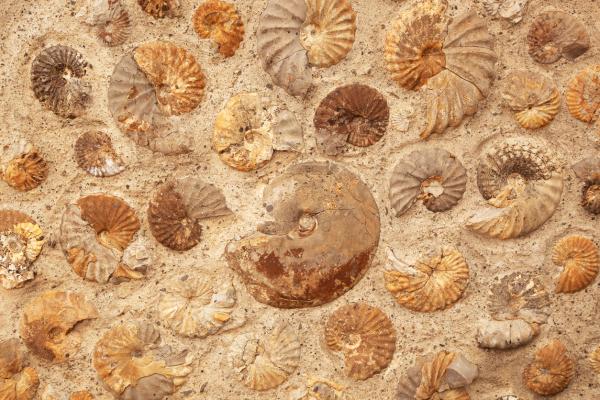
Paleontology is a scientific field concerned with the study of life. It not only encompasses an interesting past, but also a hopeful, more intriguing future. Some people believe that it is related to the study of fossil fuels, but in reality, it is richer and more imbued. It is a combination of several studies, including geology, biology, archaeology, anthropology, ecology and also computer science. With the application of computers, more dramatic and accurate diagrams and illustrations can be created, which are further studied and analyzed to gain a better understanding of the fossils. With the study of fossils in relation to all these fields, it leads to an understanding of origin and destruction of organisms and life processes. Read this oneHOWTO article to find out what are the practical uses of paleontology, where this science applies, and how it can benefit mankind.
Understanding different aspects of life
Fossils are remains of animals, plants, bacteria, fungi and other living things that get preserved in rocks over time. In paleontology, these fossil remains are used for understanding different aspects of living as well as extinct organisms. Thus, one of the main practical uses of paleontology is that fossils can give significant information about the environment and life of an organism. For instance, just like tree rings, oyster shell rings also denote one year in its life. By studying an oyster fossil, a paleontologist can find out how long that oyster lived, and what the conditions were in its surroundings. If the conditions were favorable, the oyster would have grown quickly and its rings should be thicker. Thinner rings denote struggle for survival.
Estimating the life of organisms
Paleontology can be used to figure out how organisms have evolved and changed over time. Rocks in which the fossils are preserved form horizontal layers, in which the topmost layer is younger than the layer beneath it, and the process continues until you reach the fossil. If the fossil is preserved between two layers, then one can exactly know that the fossil’s age lies between these two ages. This estimate of the fossil’s age can also be used to narrow down the lineage dates, thereby create a family tree of the organisms. With this estimate, one can get an idea of how long the last ancestor lived, and when.

Figuring out behavior of organisms
Another of the practical uses of paleontology is that it can be used to figure out behavior of certain organisms as well. Hadrosaurs are believed to live in huge herds according to paleontologists. This hypothesis was made after finding around 10,000 skeletons on a single site, suggesting that these organisms were social in behavior, and liked to live in groups. As certain organisms were trapped with some eating material in their mouth, paleontologists can deduce what these organisms ate and how. If some air bubbles got trapped inside the fossil, the paleontologist can analyze the air chemistry at that time, and know whether there were any atmospheric changes or volcanic eruptions nearby.
Paleontology and the oil industry
Since studies[1] in the mid XXth century showed how paleontology can aid in finding petroleum, this economic sector has used the knowledge of paleontology in order to find sources of oil. The sub-field of micropaleontology, which studies small fossils such as single-celled organisms and other microscopic beings, is able to determine the type of fossils that need to be found to know if the site is good to find oil.

Where does Paleontology apply?
Paleontology is a wide branch that applies in colleges, universities, museums, industries and geological surveys. This is why we'd like to show you where the knowledge mentioned above become a practical use.
- Earth science classes are held in high schools and colleges to teach students about geological sciences and applications
- Original researches are conducted to benefit companies in industries, such as petroleum, mining, oil extraction, infrastructure, archaeology, etc.
- Oil companies employ paleontologists to work on microfossils and recover fossils from rocks while digging oil wells. By studying these fossils, their age, survival and behavior can be estimated to a great extent.
- Museums also employ paleontologist to work as research scientists. These professionals work with collections of fossils, visit fields and publish their researches to help life science understanding. Some museums also conduct educational programs and exhibitions to impart knowledge and awareness
- Paleontologists are employed in federal and state geological surveys to work in teams and solve problems with relevance to nation or state
- Paleontologists can help geologists in identifying fossils, studying them and gaining a better understanding from the available resources
If you want to read similar articles to What Are the Practical Uses of Paleontology, we recommend you visit our Learning category.
- http://archives.datapages.com/data/sepm/journals/v01-32/data/013/013003/0105.htm?doi=10.1306%2FD42691AC-2B26-11D7-8648000102C1865D
- Howe, Henry V. "Use of paleontology by the oil industry." Journal of Sedimentary Research 13.3 (1943).